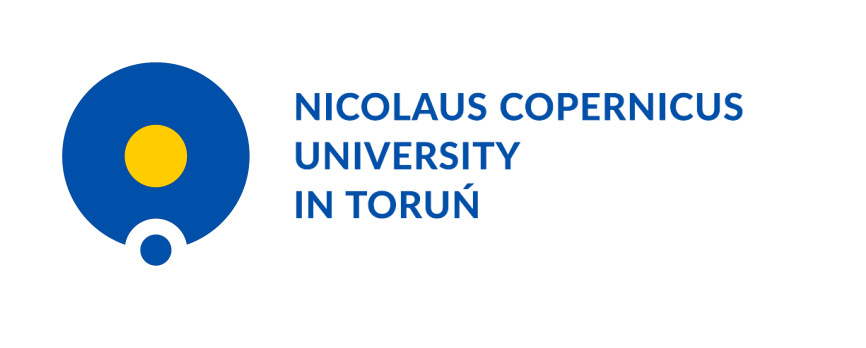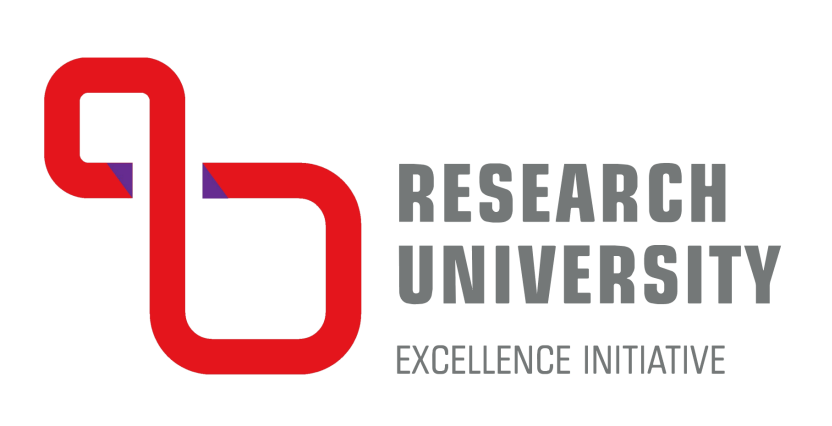From Fundamental Optics to Applied Biophotonics
The University Center of Excellence
“From Fundamental Optics to Applied Biophotonics”
Director of the Center: prof. dr. hab. Sebastian Maćkowski
The scientific activity of the Center focuses on the improvement of ultra-sensitive optical spectroscopy techniques, medical bioimaging methods, and advanced fluorescent microscopy to understand the fundamentals of interactions occurring in the world of single emitters and nanostructures, their interacting systems as well as tissues and organs such as the eye. The group of scientists forming the Centre includes both experts in experimental research having at their disposal high-quality scientific equipment and theoreticians specializing in modelling and calculations ab initio. The structure of the Center bases on three Priority Research Teams selected in the competition.
1. LIGHT-LANCET (Life-sciences, Applications, Nano-photonics – Cutting Edge Technologies), head: dr hab. Maciej Szkulmowski, prof. UMK
The interdisciplinary LIGHT-LANCET team aims to develop state-of-the-art technologies for target non-invasive biomedical optical imaging (including coherent optical tomography or phase microscopy) and their application to gain insight into the structure and function of biological systems. The research aims, among other things, at identifying biomarkers for the early detection of civilization diseases, such as:
- visual impairment determined by changes in morphology and function of the human eye,
- diabetes, hypertension and systemic diseases detected by changes in retinal blood vessels and blood flow dynamics,
- neurodegenerative disorders defined by changes in the nervous tissue of the human eye or by precise quantification of the eye morphology and its dynamics.
The team leads the way in optics, electronics and data processing to implement optical solutions, from theoretical considerations to working prototypes. During clinical trials, we collaborate with biologists and physicians, and our goal is to commercialize laboratory solutions.
2. QUANTUMSYS (Quantum systems for fundamental research), head: prof. dr hab. Roman Ciuryło
The main scope of research conducted in QuantumSys includes experimental and theoretical studies of quantum systems aimed at finding new physics outside the Standard Model. For this purpose, we want to use a global network of optical atomic clocks serving as the “workhorse”. The network we are developing in cooperation with leading laboratories around the world will enable us to investigatethe possibility of detecting dark matter. The existence of dark matter is currently one of the main fundamental questions of modern physics. At the same time, we will be looking for new hadron-hadron or non-Newtonian gravity interactions on the nanoscale. The model system tested for this purpose will be a set of quantum states of two interacting hydrogen atoms, which can be described with the highest possible accuracy, starting from the first principles. This will enable the spectroscopic data for molecular hydrogen with an accuracy at the kHz or subkHz level to be compared with theoretical ab initio calculations.
3. QUANTUMNANO (Quantum Nanophotonics), head: prof. dr hab. Sebastian Maćkowski
The most important research topics developed by the QuantumNano team concern experimental and theoretical studies of quantum phenomena occurring at the nanoscale, including:
- the utilization of precious metal nanoparticles to focus light, achieving spatial distribution capabilities exceeding the classical limits, which affects the generation of single photons,
- testing dielectric nanomaterials for the interaction of light with quantum dots and nanotubes,
- heat generation utilizing graphene and metallic nanostructures.
The aim is to develop, model, and manufacture hybrid nanostructures and devices in which these functions are combined in a controlled way to improve their performance, especially in the context of photonics, optical communication, sensorics and artificial photosynthesis applications. Our research goals include (1) development of a theoretical model of Rydberg excitement in Cu2O microcrystals, (2) development of tools for multi-photon quantum microscopy, (3) engineering of integrated, miniaturised optical elements for experiments with single photons and (4) spectroscopic examination and theoretical description of energy transfer to graphene and other two-dimensional materials.
Prof. dr hab. Sebastian Maćkowski – heads the Optics of Hybrid Nanostructures Team at the Faculty of Physics, Astronomy and Informatics, Nicolaus Copernicus University in Toruń. The team was set up in 2009 after receiving the prestigious WELCOME grant awarded by the Foundation for Polish Science. The previous experience of the research team leader, which he gained during the internships at the University of Cincinnati (3 years) and the Ludwig Maximilian University of Munich (3 years), is the foundation of the Center’s research area. After his return to Poland, Sebastian Maćkowski led numerous research projects awarded by the European Science Foundation, the Ministry of Science and Higher Education, the National Science Centre, the National Centre for Research and Development, the Office of the Marshal of the Kuyavian-Pomeranian Region, the City of Gdynia. Many of these projects were implemented in cooperation with leading institutions from abroad. Prof. Maćkowski was also the Scientific Coordinator at the Wrocław Research Centre EIT+ . He serves as President of the Research Foundation Baltic Institute of Technology in Gdynia. He held the scientific supervision over 14 PhD candidates, 9 of whom were awarded the degree of doctor (physics, biophysics, chemistry), and served as scientific advisor to 12 participants of postdoctoral internships (chemistry, physics, biology, physical chemistry).
The interdisciplinary research carried out in the Optics of Hybrid Nanostructures Team involves mainly the application of advanced and innovative techniques of microscopy and fluorescence spectroscopy in the study of basic phenomena in the nano-world, including nano-optics, sensorics, artificial photosynthesis, energy conversion, photocatalysis, etc.


 ul. Gagarina 7, 87-100 Toruń
ul. Gagarina 7, 87-100 Toruń